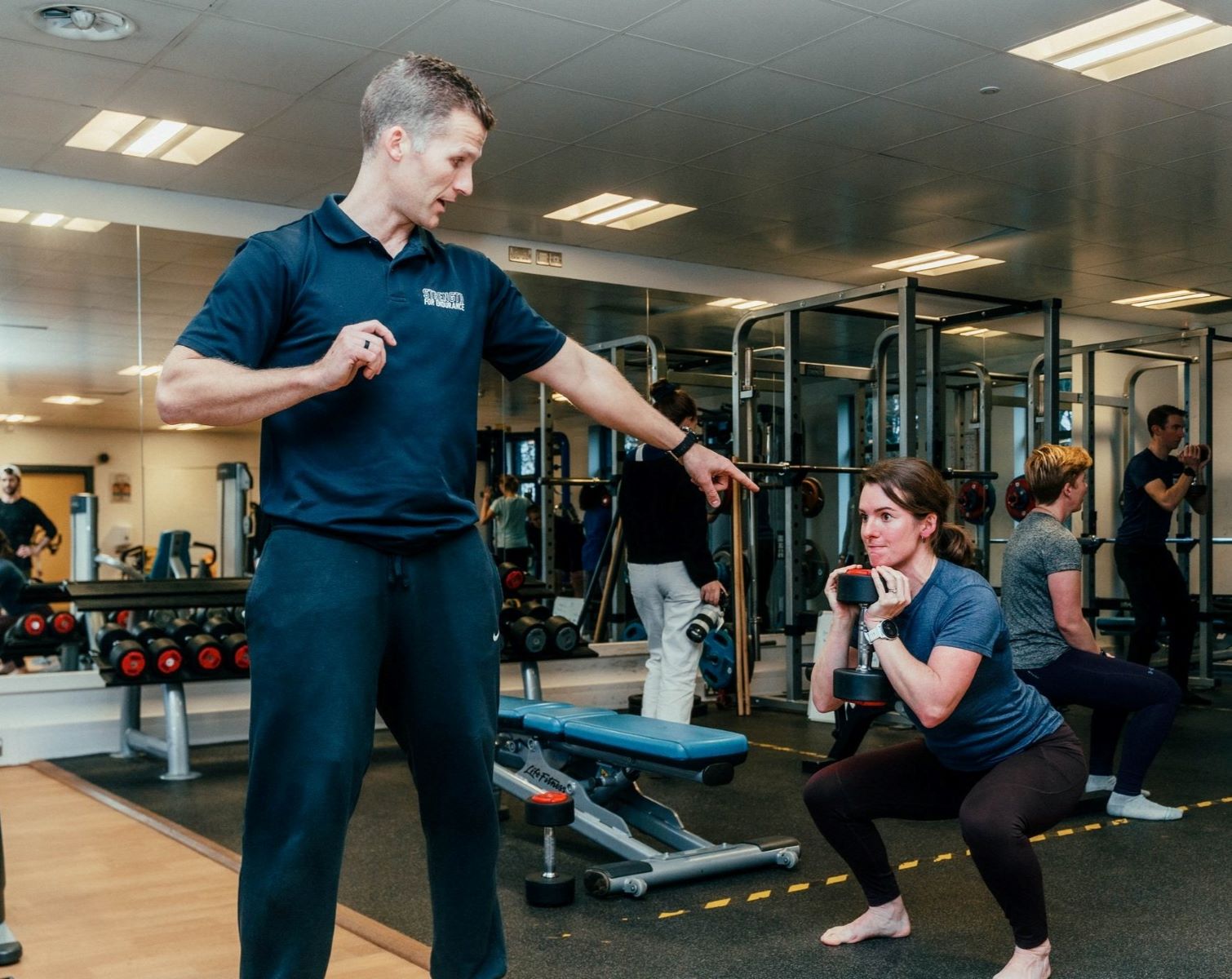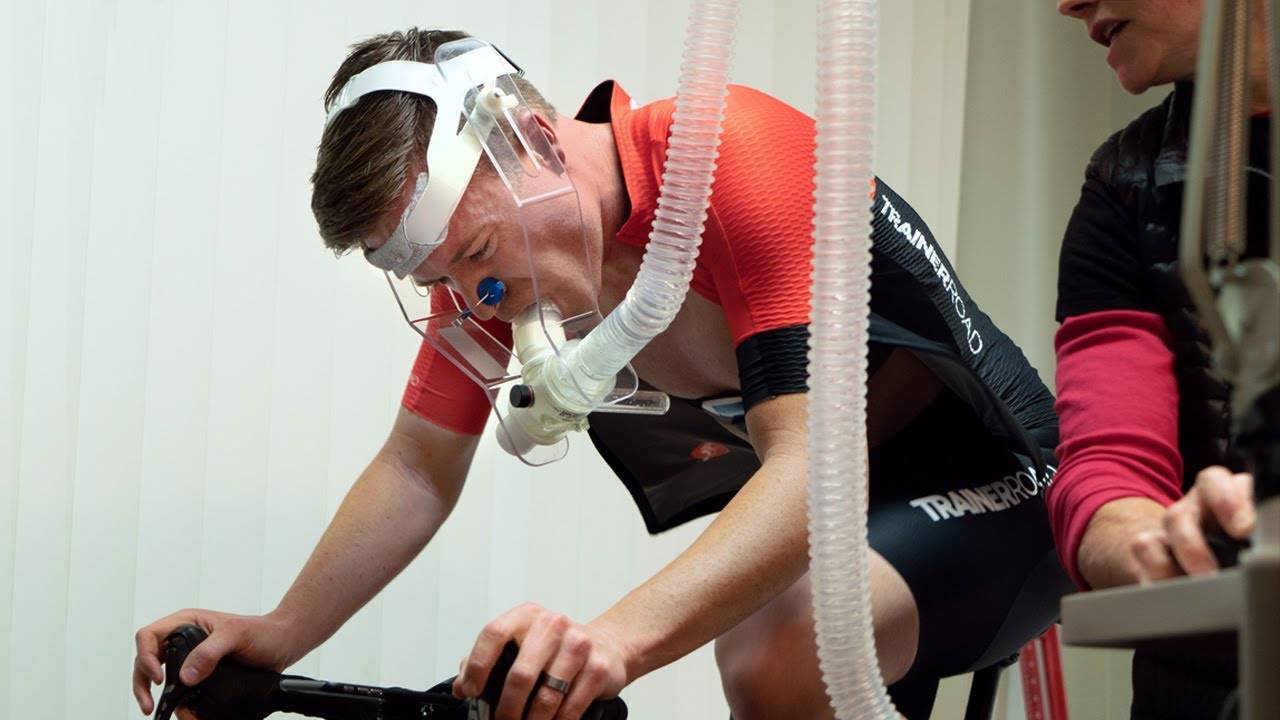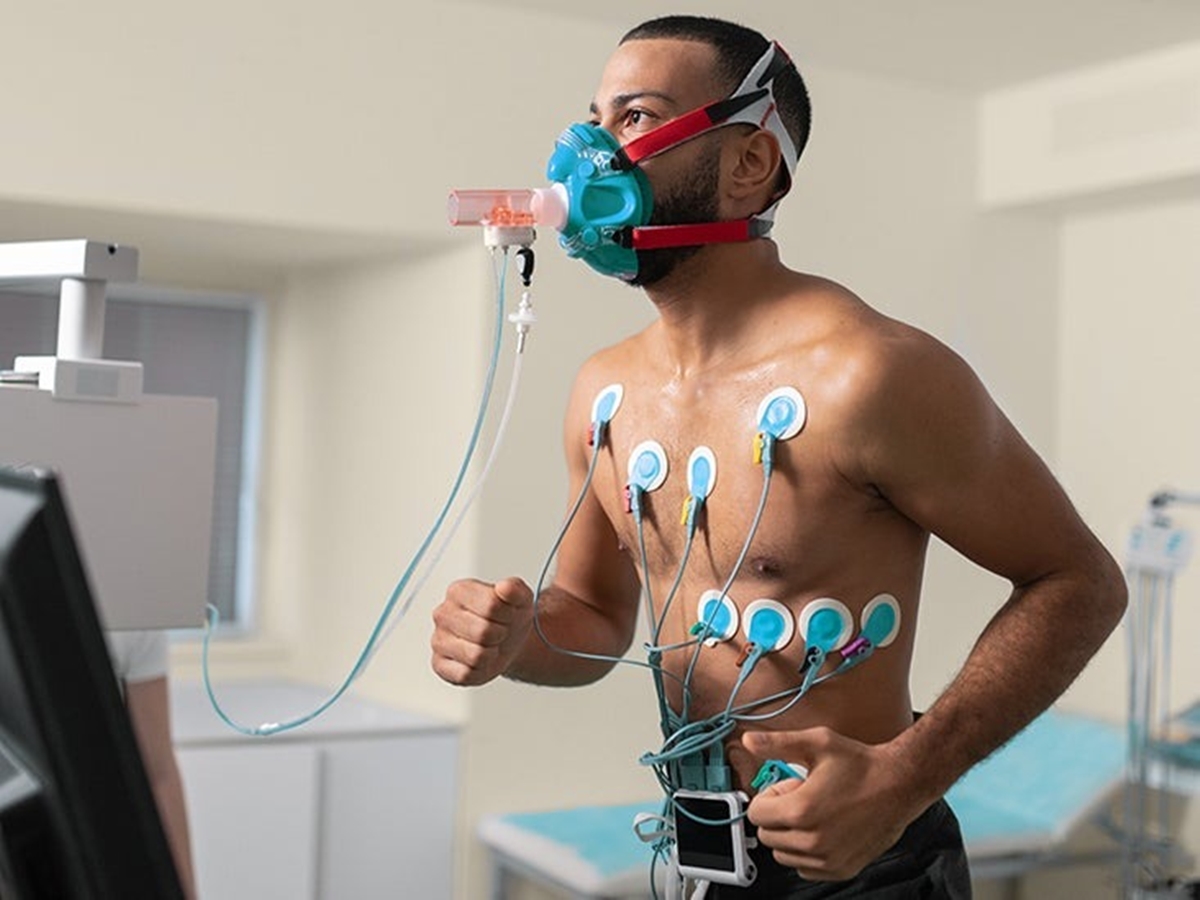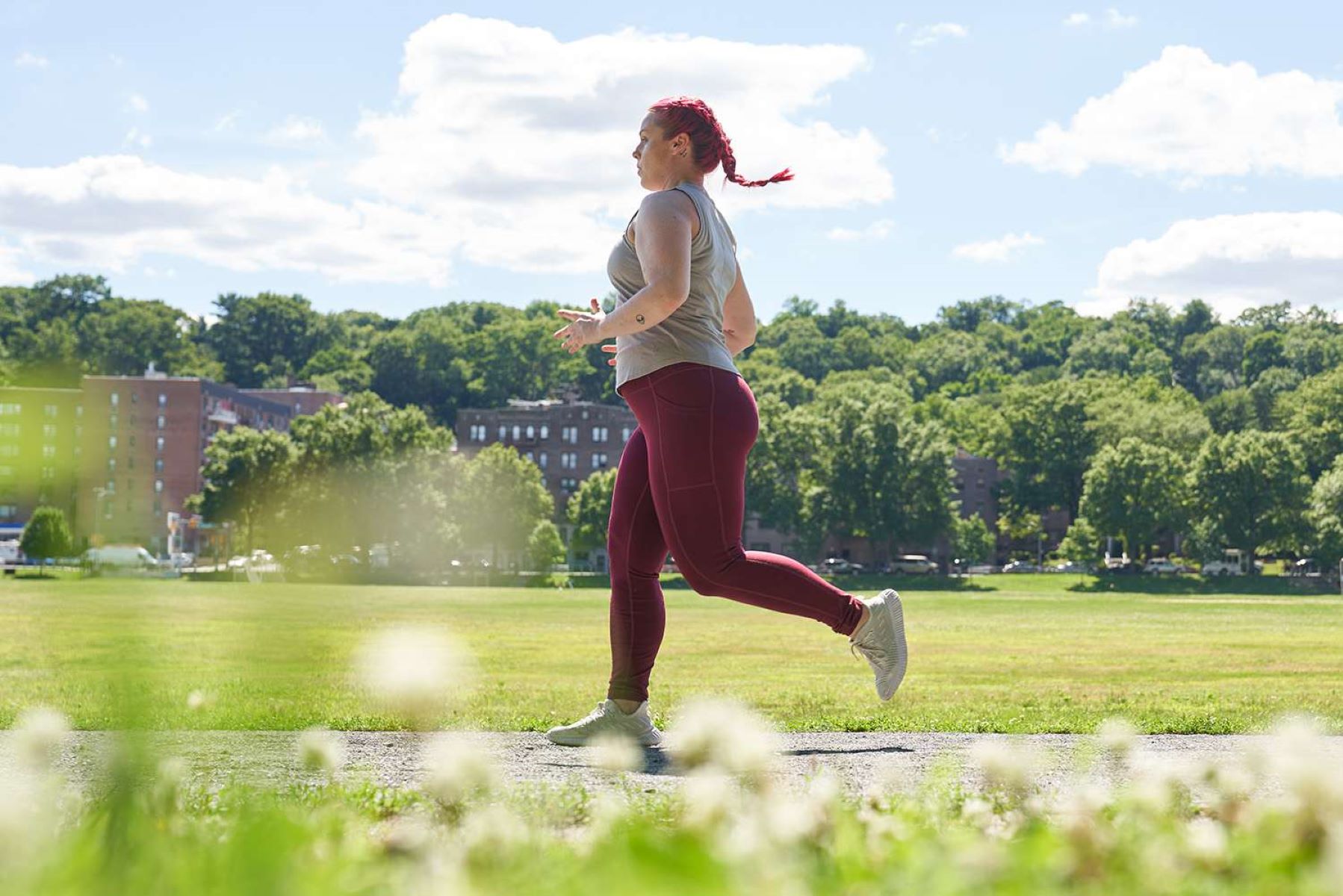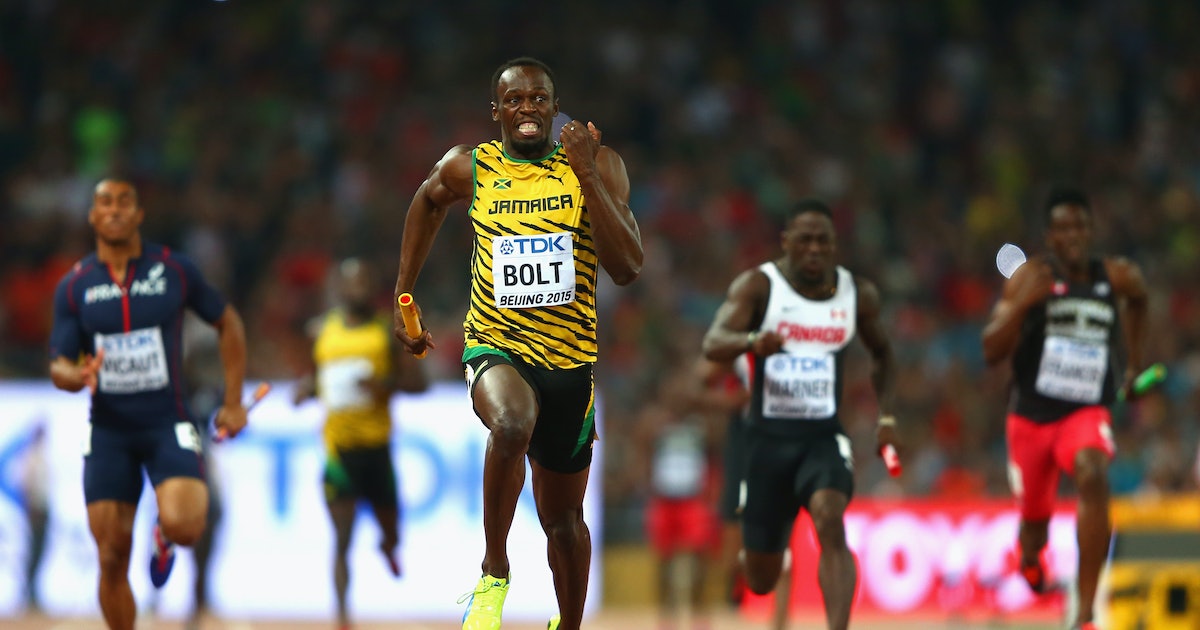Home>Misc>Featured>What Is Better For Vo2Max Improvement Long Or Short Distance Running


Featured
What Is Better For Vo2Max Improvement Long Or Short Distance Running
Modified: January 22, 2024
Discover whether long or short distance running is more effective for improving Vo2Max in this featured article. Gain valuable insights and make informed choices to enhance your running performance.
Introduction
V02Max is a term that often comes up in discussions about running and cardiovascular fitness. But what exactly is V02Max, and how can it be improved? V02Max, or maximal oxygen uptake, is a measure of the maximum amount of oxygen a person can utilize during intense exercise. It is considered one of the key indicators of cardiorespiratory fitness and endurance performance.
Improving V02Max can have numerous benefits for athletes and fitness enthusiasts. It can enhance endurance, allowing individuals to sustain intense workouts or activities for longer periods. It also improves overall cardiovascular health by strengthening the heart and lungs, increasing the body’s ability to deliver oxygen to the muscles efficiently. Additionally, a higher V02Max can result in better athletic performance and increased speed, making it a valuable metric for runners.
Several factors contribute to an individual’s V02Max, including genetics, age, gender, and training status. However, training plays a crucial role in improving V02Max. By engaging in regular cardiovascular exercise and adopting specific training strategies, individuals can significantly increase their V02Max levels.
When it comes to running, both long-distance and short-distance training methods can be effective for improving V02Max. Long-distance running, typically defined as running distances over 10 kilometers (6.2 miles), helps develop aerobic endurance and strengthens the cardiovascular system. Short-distance running, on the other hand, focuses on high-intensity interval training (HIIT), which maximizes the body’s oxygen utilization and improves anaerobic capacity.
In this article, we will explore the benefits and considerations of both long-distance and short-distance running for V02Max improvement. We will compare their effectiveness, training strategies, and potential drawbacks to provide a comprehensive understanding of which approach may be better suited for individual goals and preferences.
Definition of Vo2Max
Vo2Max, or maximal oxygen uptake, is a measure of the maximum amount of oxygen that an individual can utilize during intense physical activity. It serves as a metric for aerobic endurance and cardiovascular fitness. Vo2Max is commonly expressed in milliliters of oxygen per kilogram of body weight per minute (ml/kg/min).
To determine Vo2Max, individuals typically undergo a graded exercise test, which involves increasing the intensity of physical activity until exhaustion. During the test, various physiological parameters are measured, including oxygen consumption, heart rate, and breathing rate. The point at which oxygen consumption plateaus, despite further increases in exercise intensity, indicates the individual’s Vo2Max.
Vo2Max is influenced by multiple factors, including genetics, age, gender, and training status. Men generally have higher average Vo2Max values than women due to physiological differences. Additionally, younger individuals tend to have higher Vo2Max levels compared to older adults, largely because of age-related declines in aerobic capacity.
A higher Vo2Max indicates a superior ability to deliver oxygen to working muscles and remove waste products, facilitating prolonged endurance exercise. It correlates strongly with performance in endurance sports such as running, cycling, and swimming. Elite endurance athletes often have exceptionally high Vo2Max values, enabling them to sustain intense effort for extended periods.
Improving Vo2Max is a common goal for athletes and fitness enthusiasts. With structured training and regular cardiovascular exercise, individuals can increase their Vo2Max levels over time. By challenging the body with high-intensity workouts, such as interval training or tempo runs, the cardiovascular system adapts by becoming more efficient at using oxygen and improving oxygen transport to the muscles.
Monitoring Vo2Max can be beneficial for athletes to track their progress and identify areas for improvement. With advancements in technology, wearable fitness devices and specialized equipment can estimate Vo2Max based on heart rate data and exercise performance metrics. These tools can help individuals tailor their training programs and set realistic goals for Vo2Max improvement.
Benefits of Vo2Max Improvement
Improving Vo2Max levels can have a wide range of benefits for individuals in various fitness levels and athletic pursuits. Here are some of the key advantages of increasing Vo2Max:
1. Enhanced Endurance: A higher Vo2Max enables individuals to sustain prolonged periods of intense exercise. By improving the body’s ability to utilize oxygen efficiently, endurance athletes can maintain higher levels of performance for longer durations.
2. Better Cardiovascular Health: Increasing Vo2Max strengthens the heart and lungs, which are responsible for delivering oxygen-rich blood to the muscles. Regular cardiovascular exercise that targets Vo2Max improvement improves overall cardiovascular fitness, reduces the risk of heart disease, and enhances heart function.
3. Improved Fatigue Resistance: With a higher Vo2Max, the body becomes better equipped at clearing metabolic waste products, such as lactic acid, during exercise. This improves the individual’s ability to delay the onset of fatigue and perform at higher intensities for longer periods.
4. Increased Efficiency: Improving Vo2Max leads to a more efficient use of oxygen during exercise. This means that individuals can produce energy with less effort, allowing them to sustain higher exercise intensities without feeling as fatigued.
5. Better Athletic Performance: Vo2Max is closely linked to athletic performance, especially in endurance sports. By increasing Vo2Max, athletes can run faster, cycle longer distances, or swim with greater efficiency. This can be a significant advantage in competitive sports or personal fitness goals.
6. Weight Management: High-intensity workouts aimed at improving Vo2Max can help individuals burn more calories and manage their weight effectively. The combination of increased calorie expenditure and improved metabolic efficiency leads to better weight management and body composition.
7. Overall Health Benefits: Engaging in regular exercise to improve Vo2Max has several general health benefits. It lowers the risk of chronic illnesses like obesity, diabetes, and hypertension. It also enhances mental well-being by reducing stress levels and promoting the release of endorphins, the feel-good hormones.
Gaining these benefits requires time, consistency, and a structured training plan that focuses on Vo2Max improvement. It’s important to note that everyone’s response to Vo2Max training may vary, and individual genetics and baseline fitness levels play a role in determining the magnitude of improvement.
Factors Affecting Vo2Max
Several factors influence an individual’s Vo2Max levels. Understanding these factors can help individuals tailor their training programs and optimize their Vo2Max improvement. Here are the key factors that affect Vo2Max:
1. Genetics: Genetics play a significant role in determining an individual’s baseline Vo2Max capacity. Some people are genetically predisposed to have higher Vo2Max levels, while others may have lower levels. However, it’s important to note that genetic factors do not solely determine an individual’s potential for improvement.
2. Age: Vo2Max tends to decline with age due to physiological changes in the cardiovascular system and reductions in aerobic capacity. As individuals age, it becomes more challenging to maintain or increase Vo2Max levels. However, regular exercise and training can help slow down the decline and even improve Vo2Max in older adults.
3. Gender: On average, men tend to have higher Vo2Max levels compared to women. This difference is primarily attributed to physiological factors such as muscle mass, hemoglobin levels, and differences in body composition. However, it’s important to note that there is considerable variation within genders, and individual training and genetics play a significant role.
4. Training Status: Individuals who have a higher level of fitness generally start with a higher baseline Vo2Max. Regular exercise and training can lead to significant improvements in Vo2Max, regardless of the starting fitness level. Beginners tend to experience more substantial gains in Vo2Max compared to highly trained athletes due to the principle of initial adaptation.
5. Altitude: Training or living at higher altitudes can have a positive impact on Vo2Max. The lower oxygen availability at higher altitudes stimulates the body to produce more red blood cells to compensate, leading to an increased oxygen-carrying capacity. This adaptation can improve Vo2Max levels when returning to lower altitudes for competition or training.
6. Body Composition: Body composition, particularly the ratio of lean muscle mass to body fat, can affect Vo2Max. A higher percentage of lean muscle mass is generally associated with improved Vo2Max. Muscles require oxygen to produce energy, and a greater muscle mass allows for more oxygen utilization during exercise.
7. Health and Medical Conditions: Certain health conditions or medical interventions can influence Vo2Max levels. Conditions such as cardiovascular diseases, respiratory issues, and anemia can limit oxygen delivery to the muscles, reducing Vo2Max. Conversely, treatments like pulmonary rehabilitation and cardiac health programs can help improve Vo2Max in individuals with underlying health conditions.
While these factors can have an initial impact on Vo2Max levels, they should not discourage individuals from striving to improve. With the right training strategies and a consistent approach, individuals can overcome these factors and make significant gains in their Vo2Max capacity.
Long Distance Running for Vo2Max Improvement
Long-distance running, typically defined as running distances over 10 kilometers (6.2 miles), is a popular training method for improving Vo2Max. It focuses on developing aerobic endurance and strengthening the cardiovascular system. Here are the key aspects of long-distance running for Vo2Max improvement:
1. Aerobic Endurance: Long-distance running primarily targets aerobic energy systems, which rely on the availability of oxygen to produce energy. By consistently engaging in longer runs, individuals can build their aerobic endurance capacity. This allows the body to efficiently utilize oxygen and sustain higher intensities for extended periods, leading to Vo2Max improvement.
2. Slow-Twitch Muscle Fiber Development: Long-distance running predominantly activates slow-twitch muscle fibers, which are more efficient at utilizing oxygen. Regular long-distance runs help develop and strengthen these fibers, enhancing their ability to utilize oxygen and contributing to improved Vo2Max.
3. Increased Mitochondrial Density: Mitochondria are the powerhouses of cells, responsible for converting oxygen and food into energy. Long-distance running stimulates the growth and development of mitochondria within muscle cells. With greater mitochondrial density, the muscles can produce more energy aerobically, improving Vo2Max.
4. Cardiovascular Adaptations: The cardiovascular system undergoes beneficial adaptations with long-distance running. The heart becomes stronger and more efficient at pumping oxygenated blood to the muscles. Capillaries, which deliver oxygen and nutrients to the muscles, proliferate and become more extensive. These adaptations enhance the body’s ability to transport oxygen, leading to improved Vo2Max.
5. Enhanced Fat Utilization: Long-distance running trains the body to utilize fat as a fuel source, sparing glycogen for when it is needed most. This is especially beneficial for endurance events where glycogen depletion can lead to fatigue. By improving fat utilization, long-distance running improves the efficiency of energy production, contributing to Vo2Max improvement.
6. Time Under Tension: Long-distance running requires individuals to sustain a steady pace for a prolonged period, increasing the overall time spent exercising. This extended duration of exercise challenges the cardiovascular system and forces it to adapt to perform more efficiently, leading to Vo2Max improvement.
7. Psychological Resilience: Long-distance running builds mental toughness and resilience. By pushing through the physical and mental challenges of running longer distances, individuals develop grit and perseverance. This mental strength can be beneficial in all aspects of life and often translates into improved performance in other areas.
While long-distance running is an effective method for Vo2Max improvement, it’s important to incorporate variety into training programs. Including speed work, tempo runs, and interval training can further enhance Vo2Max and overall performance. Additionally, proper rest and recovery are critical to prevent overtraining and reduce the risk of injury.
Short Distance Running for Vo2Max Improvement
Short distance running, which focuses on high-intensity interval training (HIIT), is another effective method for improving Vo2Max. This training approach involves alternating between intense bursts of effort and recovery periods. Here are the key aspects of short distance running for Vo2Max improvement:
1. Maximized Oxygen Utilization: Short distance running, especially during high-intensity intervals, demands a rapid and significant increase in oxygen consumption. By pushing the body to its maximum capacity during these intervals, individuals can train their cardiovascular system to utilize oxygen more efficiently, leading to improved Vo2Max.
2. Anaerobic Capacity Development: Short distance running relies on the anaerobic energy system, which does not require oxygen. However, during the intense intervals, the body experiences an oxygen debt, leading to an increase in metabolic waste products such as lactic acid. Training the anaerobic capacity through HIIT improves the body’s ability to tolerate and clear these waste products, contributing to Vo2Max improvement.
3. Fast-Twitch Muscle Fiber Activation: Short distance running primarily targets fast-twitch muscle fibers, which are responsible for generating explosive power and speed. By engaging these fibers during intense sprints or intervals, individuals can improve their strength and power output, leading to improved Vo2Max.
4. Elevated Heart Rate: Short distance running with high-intensity intervals produces a rapid increase in heart rate. This sustained elevated heart rate challenges the cardiovascular system, forcing it to adapt and become more efficient at pumping oxygenated blood to the muscles. Over time, this improves Vo2Max and overall cardiovascular fitness.
5. Efficient Calorie Burn: Short distance running with high-intensity intervals burns a significant number of calories in a relatively short amount of time. This can be beneficial for individuals looking to manage their weight or improve body composition. The combination of high-intensity efforts and elevated post-exercise calorie burn contributes to improved Vo2Max.
6. Time Efficiency: Short distance running offers the advantage of time efficiency. HIIT sessions can be completed in a shorter duration compared to long-distance runs, making it a suitable option for individuals with limited time availability. Regular short distance running can still yield significant Vo2Max improvement with proper planning and consistent training.
7. Mental Focus and Discipline: Short distance running requires mental focus and discipline to push through intense intervals and recover during rest periods. This mental strength cultivated through short distance running can translate to improved performance in other areas of life and sports.
It’s important to note that proper warm-up and cooldown periods are essential when engaging in short distance running with high-intensity intervals. Additionally, seeking guidance from a qualified coach or trainer can ensure that the intervals are appropriately tailored to an individual’s fitness level and goals.
Comparison of Long and Short Distance Running
Both long distance running and short distance running can be effective for improving Vo2Max, but they differ in various aspects. Here’s a comparison of long distance and short distance running for Vo2Max improvement:
Training Focus:
– Long distance running primarily focuses on developing aerobic endurance and strengthening the cardiovascular system. It targets slow-twitch muscle fibers and enhances fatigue resistance.
– Short distance running with high-intensity intervals aims to maximize oxygen utilization and improve anaerobic capacity. It targets fast-twitch muscle fibers and enhances speed and power.
Intensity and Duration:
– Long distance running involves sustained efforts at a moderate intensity for a prolonged period. Runs can range from several miles to marathon distances, lasting from minutes to multiple hours.
– Short distance running includes high-intensity intervals with near-maximal efforts, interspersed with active or passive recovery periods. Intervals typically last for seconds to a few minutes, with overall training sessions lasting 20-60 minutes.
Physiological Adaptations:
– Long distance running stimulates aerobic adaptations, such as increased mitochondrial density, improved oxygen utilization, and enhanced cardiovascular efficiency.
– Short distance running develops anaerobic adaptations, including improved anaerobic capacity, increased enzyme activity for lactate clearance, and enhanced fast-twitch muscle fiber recruitment.
Caloric Expenditure:
– Long distance running burns a significant number of calories per session due to the sustained effort and longer durations, making it effective for weight management.
– Short distance running with high-intensity intervals results in a higher post-exercise calorie burn due to the metabolic demands of intense efforts and the need for recovery.
Mental and Psychological Aspects:
– Long distance running can cultivate mental resilience, as it requires steady effort and prolonged focus. It builds discipline, patience, and mental toughness.
– Short distance running with high-intensity intervals challenges mental fortitude, as individuals must push through discomfort and maintain effort during intense bursts. It enhances mental toughness and adaptability.
Time Efficiency:
– Long distance running requires more time commitment due to the longer training sessions, making it less time-efficient for individuals with limited availability.
– Short distance running, with its higher intensity intervals and shorter overall training sessions, offers time-efficient options for those with busy schedules.
The choice between long distance and short distance running for Vo2Max improvement depends on individual goals, preferences, and time availability. Combining elements of both training methods in a well-rounded training program can provide comprehensive Vo2Max improvements and overall fitness benefits.
Training Strategies for Vo2Max Improvement
Improving Vo2Max requires structured training strategies that specifically target aerobic capacity and oxygen utilization. Here are some effective training strategies for Vo2Max improvement:
1. High-Intensity Interval Training (HIIT): Incorporate short bursts of high-intensity efforts followed by brief recovery periods. This training method maximizes oxygen utilization and challenges the cardiovascular system. Examples include sprint intervals, hill repeats, and Tabata-style workouts.
2. Tempo Runs: Tempo runs involve running at a comfortably hard pace, just below the anaerobic threshold. Consistently maintaining this pace for a sustained duration improves aerobic capacity and trains the body to sustain higher intensities for longer periods.
3. Fartlek Training: Fartlek, meaning “speed play” in Swedish, involves incorporating varied intensities and speeds into a run. It combines continuous running with intervals of faster-paced efforts. This type of training improves both aerobic and anaerobic fitness and enhances Vo2Max.
4. Long Slow Distance Runs: Regular long distance runs at a steady, conversational pace enhance aerobic endurance and strengthen the cardiovascular system. These runs stimulate adaptations in slow-twitch muscle fibers, mitochondrial density, and overall aerobic capacity.
5. Interval Training Programs: Structured interval training programs that progressively increase the intensity and duration of intervals are effective for Vo2Max improvement. These programs include a mix of short, medium, and longer duration intervals, gradually challenging the body to adapt and improve Vo2Max.
6. Cross-Training: Incorporating cross-training activities such as cycling, swimming, or rowing can provide additional cardiovascular workouts without excessive impact on the joints. These activities complement running workouts and can enhance overall aerobic fitness and Vo2Max.
7. Consistency and Progressive Overload: Consistency is key in Vo2Max improvement. Regularly engaging in training sessions that challenge the cardiovascular system and gradually increasing the intensity or duration of workouts promotes adaptation and growth in Vo2Max.
8. Recovery and Rest: Adequate recovery and rest are essential for Vo2Max improvement. Allow for active recovery days or complete rest days to promote muscle repair, prevent overtraining, and avoid injury.
It’s important to gradually introduce these training strategies into a structured program and personalize them based on individual fitness levels, goals, and preferences. Consulting with a coach or trainer can provide valuable guidance and help in designing a tailored training plan for optimal Vo2Max improvement.
Conclusion
Improving Vo2Max is essential for enhancing aerobic fitness, endurance, and overall performance in various sports and fitness activities. Both long distance running and short distance running with high-intensity intervals offer effective strategies for Vo2Max improvement, with each approach targeting different aspects of cardiovascular fitness and energy systems.
Long distance running focuses on developing aerobic endurance, strengthening the cardiovascular system, and improving overall fatigue resistance. It is particularly beneficial for individuals looking to excel in endurance events and build a solid aerobic base.
On the other hand, short distance running with high-intensity intervals maximizes oxygen utilization, challenges the anaerobic energy system, and develops speed and power. It is ideal for individuals seeking to improve anaerobic capacity and enhance their ability to sustain high-intensity efforts.
When choosing a training strategy for Vo2Max improvement, it is crucial to consider individual goals, time availability, and personal preferences. Combining elements of both long distance and short distance running, along with incorporating other training techniques like tempo runs, fartlek training, and interval programs, can provide a well-rounded approach for Vo2Max improvement.
Furthermore, factors such as genetics, age, gender, training status, altitude, and body composition influence an individual’s Vo2Max capacity. While these factors may play a role, they should not deter individuals from striving for improvement, as training and conditioning can still lead to significant gains in Vo2Max.
Regardless of the chosen training method, consistency, progression, and proper rest and recovery are crucial for optimizing Vo2Max improvement. Building a structured training plan, seeking guidance from qualified professionals, and monitoring progress can help individuals track their improvements and make necessary adjustments.
In conclusion, Vo2Max improvement through long distance running or short distance running with high-intensity intervals offers numerous benefits, including enhanced endurance, cardiovascular health, and athletic performance. Selecting the most suitable training strategy and incorporating it into a well-rounded training program can lead to significant improvements in Vo2Max and overall fitness levels. So lace up your running shoes, hit the road or track, and embark on your journey towards reaching new heights of aerobic capacity.
